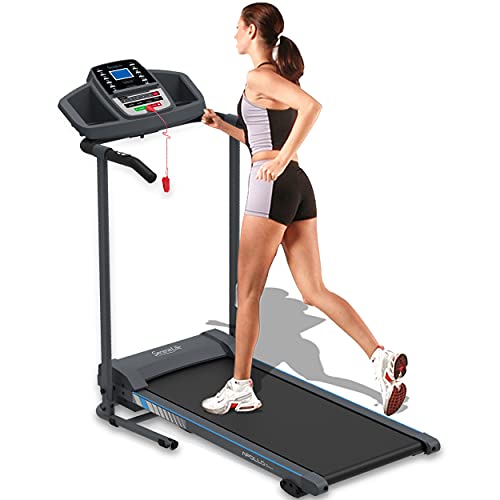The Rise of Non-Electric Treadmills in the UK: A Sustainable Approach to Home Fitness
In the last few years, the fitness market has actually seen a significant shift towards sustainability and health-conscious way of lives. With the increase of eco-friendly items, non-electric treadmills have gotten significant popularity amongst physical fitness enthusiasts and casual users alike. These treadmills provide an unique blend of sustainability, effectiveness, and price, making them an exceptional choice for those seeking to get fit without the significant price of electricity-consuming machines. This post will check out the features, benefits, and alternatives available in the UK market for non-electric treadmills.
Comprehending Non-Electric Treadmills
Non-electric treadmills, often described as manual or self-powered treadmills, run without a power source. Rather, they rely entirely on the user's motion to drive the treadmill belt. They can be a terrific addition to home fitness centers, specifically for those wanting to avoid high electricity expenses or seeking to minimize their carbon footprint.
Types of Non-Electric Treadmills
There are numerous types of non-electric treadmills offered in the market. Here's a concise table that breaks down the main types you may come across:
| Type | Description | Pros | Cons |
|---|---|---|---|
| Wood Treadmills | Made from premium wood, providing a timeless aesthetic. | Durable, visual appeal | Much heavier and can be more costly |
| Steel Treadmills | Sturdy and robust, usually made from steel or strong metals. | Lasting, stable | Much heavier, may have a higher carbon footprint |
| Foldable Treadmills | Easy to keep and carry, often with a light-weight frame. | Space-saving, portable | May compromise on stability and durability |
| Incline Treadmills | Deals integrated in incline features for included intensity. | Great for diverse workouts | Frequently much heavier and pricier |
Key Features of Non-Electric Treadmills
- User-Powered Movement: The most distinct function is that they are powered directly by the user, offering a natural running simulation.
- Adjustable Incline: Many designs allow users to change the incline by hand, providing a more challenging workout.
- Space Efficiency: Treadmills can be developed to fold or compact quickly for storage, matching homes with restricted space.
- Toughness: Non-electric treadmills are usually developed from robust products, assuring a long life expectancy with routine use.
Advantages of Non-Electric Treadmills
Non-electric treadmills featured numerous advantages that make them an appealing option:
- Cost-Effective: By removing the requirement for an electrical outlet, users can minimize electricity costs and use their machines anywhere.
- Sustainable Workout: These treadmills represent a greener method to fitness, adding to a lower ecological effect.
- Natural Running Mechanics: The manual element engages core muscles more efficiently and assists enhance versatility and stability.
- Lower Maintenance Costs: Being mechanical, there is less that can go incorrect compared to their electric equivalents, resulting in lowered upkeep requirements.
Aspects to Consider When Choosing a Non-Electric Treadmill
While picking a non-electric treadmill, a prospective buyer should consider several elements:
- Weight Capacity: Ensure that the treadmill can accommodate the user's weight.
- Runner's Comfort: Look for features like adjustable belt resistance and cushioning to improve convenience.
- Portability: If area is a concern, opt for a model that can be easily folded or transferred.
- Price Range: Establish a budget plan as prices can vary extensively based upon products and features.
Popular Models in the UK
The UK market provides a range of non-electric treadmills with numerous functions and price points. Here are some well-regarded options:
| Model | Price Range | Key Features | User Ratings |
|---|---|---|---|
| Fitness Reality TR3000i | ₤ 300 - ₤ 450 | High weight capability, foldable, and manual incline | 4.5/ 5 |
| Kettler Track S | ₤ 400 - ₤ 600 | Adjustable incline, compact design | 4.6/ 5 |
| Smarter Fitness SMA7 in the house | ₤ 250 - ₤ 400 | Made from wood, aesthetic style, really durable | 4.4/ 5 |
| ProForm Performance 400i | ₤ 300 - ₤ 500 | User-friendly interface, good develop quality | 4.3/ 5 |
Often Asked Questions (FAQ)
Q1: Can I get a good workout on a non-electric treadmill?
A1: Yes! Non-electric treadmills engage your muscles more than electric models due to their manual nature, providing an excellent cardiovascular exercise.
Q2: Are non-electric treadmills more economical than electric ones?
A2: Generally, they are more cost effective given that they do not rely on electrical functioning, triggering less maintenance and operation costs.
Q3: How do I preserve a non-electric treadmill?
A3: Maintenance is basic. Keep the treadmill clean, lube the belt if essential, and regularly inspect for any loose bolts or parts.
Q4: What is the weight limit for non-electric treadmills?
A4: Most models support a weight variety in between 100kg and 180kg. It is recommended to check specific specifications.
Q5: Is working on a non-electric treadmill more difficult than on an electric one?
A5: It can be, as users must create all movement. However, this can lead to much better endurance and muscle engagement with time.
As the UK turns its focus towards sustainable living and much healthier way of lives, non-electric treadmills provide a testament to this altering landscape. With Home Treadmills and eco-friendly leanings, these devices represent a considerable shift in how people see fitness in the house. By considering the benefits and vital elements laid out in this post, physical fitness enthusiasts can make informed choices that cater not only to their physical fitness needs however likewise to their environmental suitables.
Whether it's for casual walking or extreme running, buying a non-electric treadmill can be an action towards a much healthier and more sustainable lifestyle.

